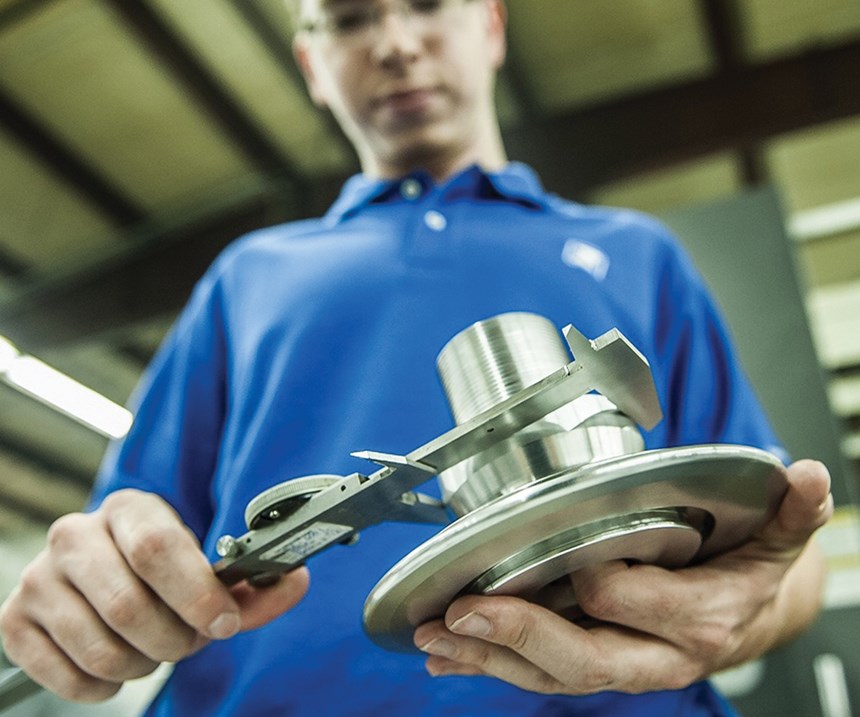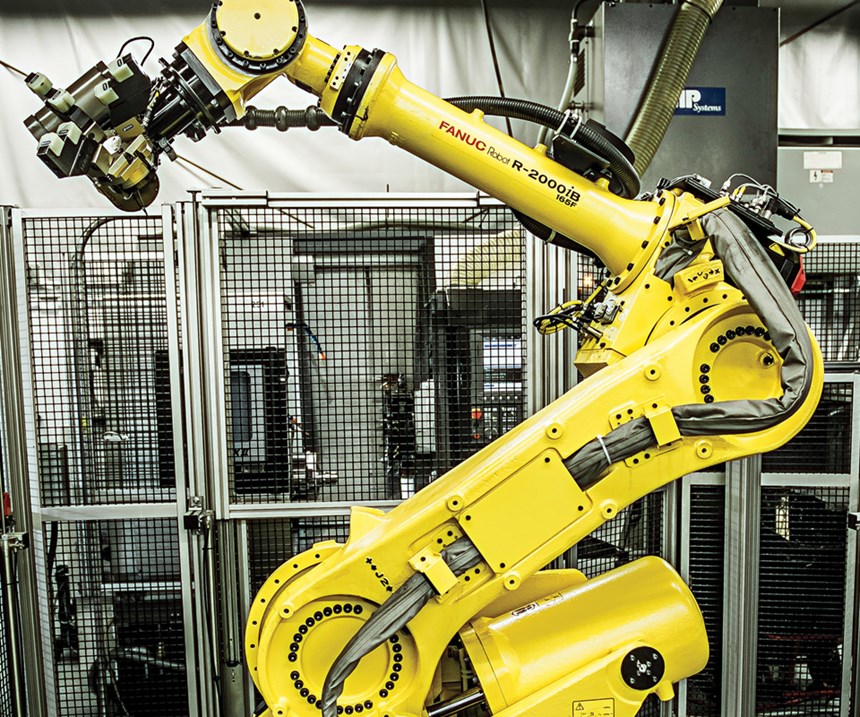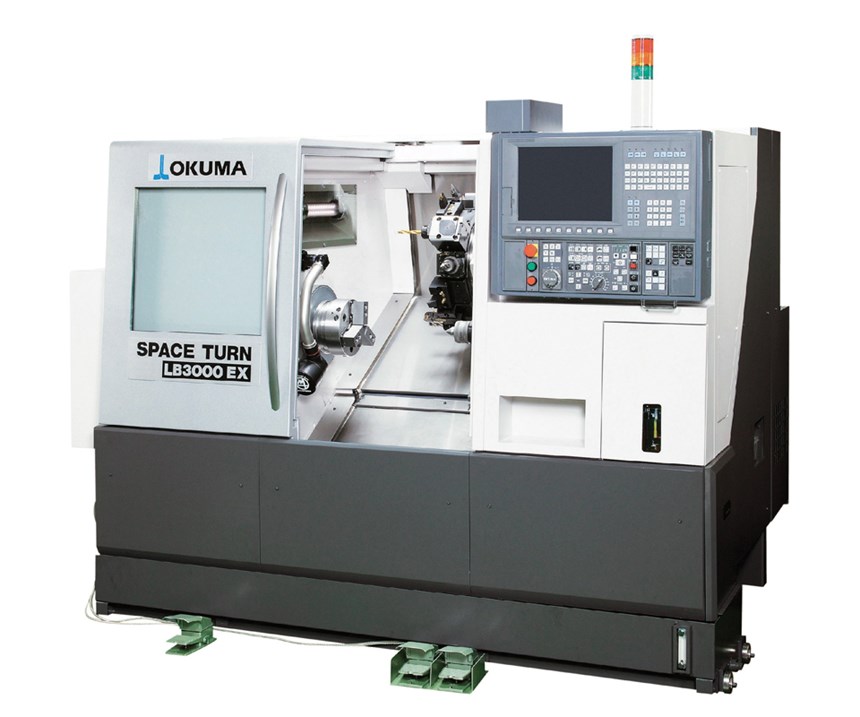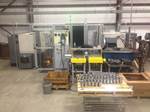Reducing Production Times with Robotic Automation
A complete overhaul of its processes using lean principles helped this shop improve production by almost 90 percent.
There are as many reasons to explore manufacturing automation as there are CNC machine shop owners. For Rusty Arant, of family-owned Northeast Tool, located in Matthews, North Carolina, the trigger for considering this technology was a statement he heard at a 2013 customer/supplier conference. “The speaker said, ‘If you are not a progressive company that is willing to automate, you may not be here next year,’” Mr. Arant says. That was a wake-up call for the then 50-year-old precision manufacturing company.
“We’d been considering ways to improve our workflow, but hadn’t really looked into using robots to automate our machining processes. We already had some robotic welding stations, but that was the extent of our manufacturing automation.”
Northeast Tool’s 62 employees produce about 2,000 unique parts each year in quantities ranging from one-offs to 40,000 pieces. Its customers include companies in the transportation, aerospace, medical, defense and energy industries. Annual volume is $12 million.
One of the high volume parts the company produces is a series of aluminum end caps for carbon fiber compressed natural gas (CNG) tanks. These “return to base” tanks carry fuel for buses, trucks and other vehicles that traditionally run on diesel or gasoline. CNG is a greener, cleaner burning alternative fuel that creates less pollution. When Mr. Arant took a close look at the manufacturing process for these parts, he identified it as an opportunity to convert the existing approach to robotic automation.
Using value streaming and lean principles, he documented every step of the existing manufacturing process, from raw materials through machining, inspection and preparation for shipping. “I decided to take the approach that everything we were currently doing to make these parts was wrong. This helped me look at the job with fresh eyes. Instead of simply trying to improve the process we already had, we rethought our entire approach to see how we could make these parts much more efficiently.”
The existing process began with receipt of barstock that Northeast Tool would saw to size, load into the first machine tool to rough, turn one end and then set aside for batching. When a batch of parts was ready, each part would be individually loaded into additional machines for further processing, which included a polishing machine to achieve the required surface finish. Because of all of the handling in and out of machines, the parts often had to be re-polished to meet specifications.
What Mr. Arant discovered was that each part traveled the equivalent of one mile throughout his facility, from start to finish. The entire process required three CNC lathes, two milling operations, polishing, washing and inspections after each operation. Throughout this journey, at least 15 people touched the part during the course of two and one-half shifts. These touches included sawing and stacking barstock on pallets, machining, counting, batching, washing, inspecting and shipping. Recognizing that every touch adds cost to a part, Mr. Arant knew he needed a less hands-on process.
Looking for a turnkey solution, Mr. Arant began talking to suppliers to identify a company that had the capability to combine machining, inspection and automation. “I wanted a system that would integrate everything from raw materials to finished parts and could be attended by a single machine operator. I talked to a number of suppliers, but did not find what I was looking for until Okuma dealer Morris South brought in Gosiger Automation. They listened to what I wanted to achieve and came back with a plan that checked all of my boxes.”
As a result, the company now needs only 4 minutes, 51 seconds to make (from raw stock to out the door) aluminum CNG tank end caps that previously took 39 minutes, 21 seconds to complete. Not only is this a huge time savings, it also frees up considerable floor space that was occupied by the additional 14 people, tools and working space that the former system required. Northeast Tool then had the ability to add more machines to expand capacity and repurpose people to other jobs.
The automation system designed by Gosiger Automation consists of one FANUC R-2000iB/165F six-axis industrial robot positioned in the center of three Okuma LB-3000EX-MY lathes arranged in a semi-circle. A floor-mounted pallet locator positions a pallet holding workpieces delivered by a lift truck. The family of parts consists of 17 distinct end caps made from blanks that range in size from 4 inches in diameter by 3 inches in length, to 8 inches in diameter by 8 inches in length.
Rethinking the process from raw material onward led to replacing the raw barstock, which Northeast Tool originally sawed into part lengths, with precut bars bearing part identification codes. The robot employs an end-of-arm tooling-mounted iRVision system to confirm the part identification codes and locate the parts for pickup.
An end-of-arm, three-jaw, OD gripper system grips the workpiece on the outside shank diameter for loading and unloading the lathes as well as for placing and removing parts for post-process inspection on a coordinate measuring machine (CMM).
All programs for the 17 part numbers reside in the machine tool and are called up by the automation system based on the next part to be processed. In operation, the robot locates the part by using the vision system to identify the 2D bar code. It then loads the part into the first machine tool that performs rough machining, and then moves it from the first machine to the second Okuma lathe, which machines the front side. The third lathe performs milling and second turning operations. Between operations, the robot flips parts as necessary based on the part program.
Post machining, the robot unloads the part from the third lathe and places it on a CMM for inspection. Data from the CMM measurements are fed back into the machine tools to enable automatic tool offsets.
In addition to the time and cost savings, automation is helping the company accelerate growth strategies. In fact, it is ready to more than double the existing facility to about 70,000 square feet. This expansion will enable Northeast Tool to further automate the plant and provide much needed space for material storage. It will also help to improve shipping and receiving functions. The goal is to make every aspect of the business more efficient while moving into new markets.
“When you consider it, mankind has always made things by using some sort of hard tool to shape softer material,” Mr. Arant says. “We’re still doing that with tooling that’s harder than the materials we cut. Automating this process and integrating inspection to maintain tolerances takes it to the next level.” He sees the company soon combining automated machining with newer technologies such as additive manufacturing to become even more productive. “I’m glad we had that wake-up call to automate a few years ago and that we found a capable and easy to work with partner in Gosiger Automation.”
Related Content
Starting Small with Automation
Quick-change workholding and flexible robotic automation started this small shop on the path to success.
Read MoreInside the Premium Machine Shop Making Fasteners
AMPG can’t help but take risks — its management doesn’t know how to run machines. But these risks have enabled it to become a runaway success in its market.
Read MoreProcess Parsimony — Automation’s Secret Key for Scale and Quality
Automation is thought to be the secret to improving quality in manufacturing. What if I told you it was something else?
Read MoreHigh-Production Multitasking Becoming More Flexible
Rotary transfer machines remain well-suited for high-volume production, but are now more accommodating to smaller batch sizes.
Read MoreRead Next
CNC Shop Employees Benefit from Robotic Automation
To better use machine operators’ time and improve overall productivity, Dimension Machine Co., invested in two Okuma Genos lathes with a FANUC M-710iC/50 robot from Gosiger Automation.
Read MoreFinding the Right Tools for a Turning Shop
Xcelicut is a startup shop that has grown thanks to the right machines, cutting tools, grants and other resources.
Read MoreHow To (Better) Make a Micrometer
How does an inspection equipment manufacturer organize its factory floor? Join us as we explore the continuous improvement strategies and culture shifts The L.S. Starrett Co. is implementing across the over 500,000 square feet of its Athol, Massachusetts, headquarters.
Read More


























